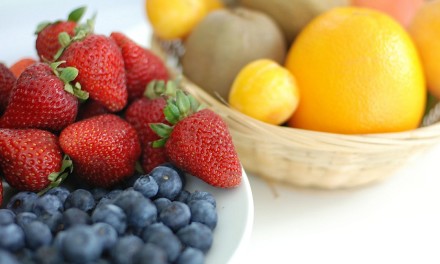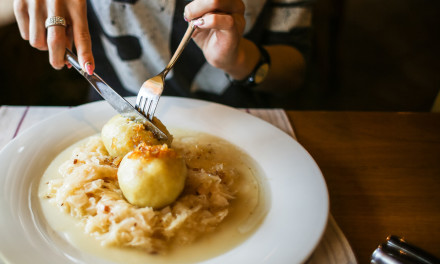For some millennia tea has benefited human in many ways. Its first benefit is the most obvious. People love it so much for its good taste, for quenching thirst and also because it is the most popular beverage on earth. Tea is a positively healthy drink. Different kinds of tea have their own special benefits and unique advantages. They all usually break down fats, aiding digestion and elimination. Tea is also the best tool for diets.
White Tea
It is slightly fermented tea. The brew is light shimmering yellow. As they undergo very light fermentation, white teas retain high level of catechins. It is especially good for summer because it could reduce heat in our body. Also it helps our metabolisms.
Red Tea
Red tea is fully fermented tea. Its appearance is dark brown or dark red. It emits very strong and sharp piercing tea aroma. It contains rich caffeine. It could warm your stomach; however it also contains tannin that is not suitable for long term drinking by people who have sensitive stomachs.
Oolong Tea
Oolong tea is semi-fermented tea. The aroma and tastes of Oolong teas vary from fruity to floral. It could refresh your mind and help you to lose weight. It can also prevent heart disease and obesity.
Yellow Tea
Yellow tea is slightly fermented tea and gets the name from the color of the brew that it makes. It emits a very pure and fresh fragrance and refreshes your breath.
Green Tea
Green tea is non-fermented tea. Green Teas also contain less caffeine and have high antioxidant properties. These unique characteristics are good for skin and diets. Nowadays Japanese women view it as the best slimming tea.
Green tea is the greatest harvested tea. It is a non-fermented tea. There’s no withering and fermentation in the manufacturing process. Instead, the tea leaves are plucked, then steamed or pan fried (which removes the fermentation enzymes), rolled, and then dried. This process yields a chemical composition in green tea similar to the fresh tea leaf.
Green tea has a high content of vitamins and minerals. It contains ascorbic acid (vitamin C) in amounts comparable to a lemon. Green tea also contains several B vitamins which are water soluble and quickly released into a cup of tea. Five cups of green tea a day will provide 5-10% of the daily requirement of riboflavin, niacin, folic acid, and pantothenic acid. The same five cups of green tea also provide approximately 5% of the daily requirement of magnesium, 25% of potassium, and 45% of the requirement for manganese. Green tea is also high in fluoride. A cup of green tea provides approximately 0.1 mg of fluoride, which is higher than in fluorinated water. Green tea is also rich in phenols which would enhance the immune system and fight off many illnesses. Research has confirmed that phenols would deter the growth of malignant tumours and green tea has been named one of the top ten health foods by Time Magazine.
All the different kinds of green tea have different flavours, but they do have a taste in common. The flavour of green tea can be described as: fresh, light, green, or grassy. Some varieties of green tea have a bit of sweetness to them, and some have the taste of peas. Green tea is best sipped plain. It has a delicate color, which ranges from almost clear, to gold to shimmering, transparent greens. To fully experience the pleasures of green tea, it is important to be open to its fragrance, color and nuance of taste. Green tea is more delicate than black, so you want to keep the water a little cooler. Brewing at about 85-90 degrees Celsius is the best
Black Tea
Black teas are considered to be late fermented teas. They are the best tea for health; suitable for the elderly and for children too. Drinking aid in digestion, reduce blood cholesterol and lipid levels. It can also increase the drinker’s metabolism. Black Tea is considered to be a heavily fermented tea. The fermentation process is done naturally through years of storing in the right climatic conditions. The tea leaves can be plucked all year round and sometimes they are fermented before being compressed and sometimes compressed before being stored for natural fermentation. Good black tea should be smooth with a particular taste not available in the other types of tea. Some teas have the taste of Chinese herbs which is a taste that should linger in your mouth. The prices of Pu-erh teas can be quite expensive particularly for the older types. In terms of age, the more expensive grades are aged for more than 20 years. The taste of these teas is very pure and exquisite.
Bitter Tea
Bitter tea is the best tea for people with diabetes. It can reduce cholesterol and high blood pressure. It can also prevent constipation. It is now considered as a great slimming product for women. 1 g of one leaf tea could make 150ml of tea. Its taste is strong and bitter at first but it will become sweet afterwards. The color of bitter tea is light green. The size of the tea leaf is 1.5-2 times bigger than the normal tea leaf.
It is reputed as “Green Gold” because of its numerous health benefits. According to some scientific research, bitter tea has extra health benefits: it is especially good for people with hypertension and diabetes, and it also has anti-cancer properties. It aids digestion and helps emulsify fat. It can also help people avoid suffering from constipation. This tea does not have any side effect but it is not suitable for babies and expectant woman.
Floral Tea
Jasmine, Rose and Osmanthus Tea are women’s beloved. Floral teas have delighted with their fragrant aromas and flavor. The tastes in general are much lighter compared with others. They are especially good for drinking in summer. It can reduce the heat in your body. It is also used for relaxing to prevent insomnia.
Chrysanthemum/ Chamomile
This refreshing tea helps with insomnia, lowers blood pressure, lowers cholesterol levels, enhances vitality and nourishes the skin. Drinking this tea can improve pre-menstrual aches and pain, reduce constipation, resolve cold symptoms, and relieve muscle cramps. Regular use of this tea can enhance memory, maintain liver function, reduce eye strain, and may even help to reduce the severity and frequency of migraine headaches. Chamomile tea has been used to prevent development of diabetic complications such as loss of vision, nerve and kidney damage. camomile has been used to treat inflammation, skin diseases, wounds, gout, and ulcers. Recent research shows that chamomile plant extract may even suppress the growth of human cancer cells.
10 Extraordinary Medicinal Uses for Rose Tea
The reasons for the diuretic effects of the roses are they contain Vitamin C, pectin, malic and citric acids.
- It clears toxins and heat from the body. As a result it has a cooling effect on the body.
- It can relieve a sore throat, and clear a blocked or runny nose.
- It is useful to people those prone to chest problems by fighting against infections.
- Rose tea helps to fight the infection in the digestive tract and re-establish the normal bacterial population of the intestines
- It relieves fluid retention and hastens the elimination of wastes through the kidneys.
- It is a wonderful remedy for dysentery, diarrhea and gastroenteritis.
- It is a laxative. It works as a remedy for all liver problems including bowel sluggishness and constipation.
- It cleanses the liver and gall bladder and promotes bile flow
- Rose petal tea can be used to relieve uterine congestion causing pain and heavy periods. It is an excellent remedy for irregular periods and infertility.
- It has an uplifting effect on the nervous system and can relieve insomnia, depression and fatigue









Subscribe Today!
Join our mailing list and we'll make sure you don't miss a thing
Thank you for subscribing! We will send you a confirmation email shortly.